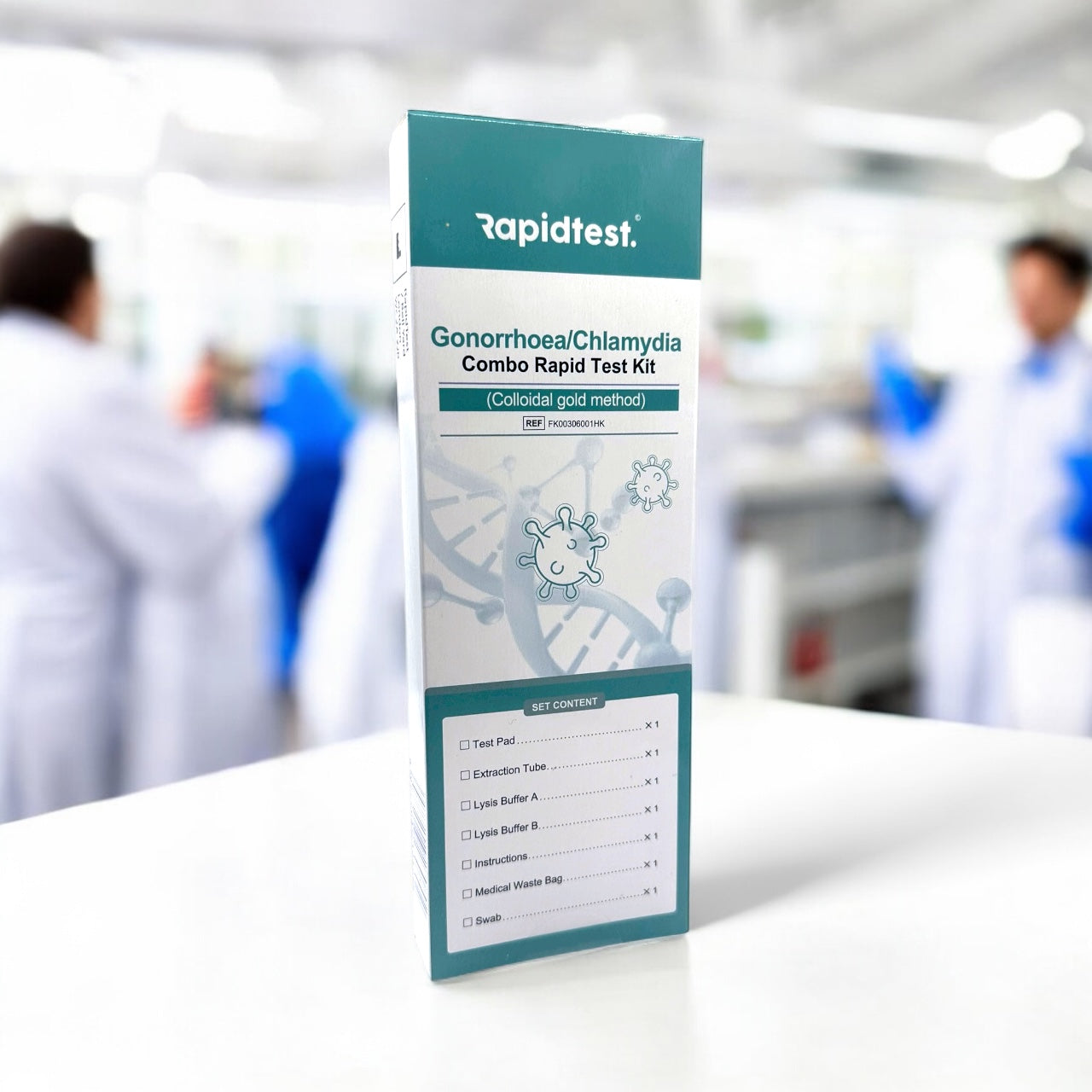
🩺 How Often Should You Take a PSA Test?
Share
🧠 Overview
Knowing when — and how often — to take a PSA (Prostate-Specific Antigen) test is one of the most effective ways to protect your prostate health. Your PSA level is a key marker of how well your prostate is functioning, and monitoring it regularly helps you spot changes early — often before symptoms appear.
For most men, PSA levels naturally increase with age. However, higher-than-normal results can also indicate inflammation, benign enlargement (BPH), or, in some cases, prostate cancer. Regular testing provides the clearest long-term picture of your health and allows you to discuss trends with your GP, rather than relying on one-off results.
With modern at-home PSA test kits, you can easily monitor your levels from home, in private, with results in just 15 minutes.
It’s a fast, CE-certified and discreet way to take control of your wellbeing — without waiting for a doctor’s appointment or lab test.
Testing consistently doesn’t just give you peace of mind — it’s one of the most powerful tools for early detection and prevention. Whether you’re monitoring your health proactively or have a family history of prostate issues, establishing a routine PSA testing schedule is one of the smartest decisions you can make.
🧩 Recommended Testing Frequency
How often you should take a PSA test depends on your age, personal risk factors, and family history.
For most men, testing once per year is ideal for tracking gradual changes.
Others, especially those with risk factors, may benefit from more frequent testing every 6–12 months.
The PSA test isn’t a one-time event — it’s a long-term tracking tool.
Because PSA levels naturally fluctuate, regular testing helps you and your doctor detect subtle patterns or increases that might signal inflammation, enlargement, or early signs of prostate cancer.
Below is a general guideline based on current medical consensus in the UK, USA, and Europe:
|
Age Group |
Recommended Frequency |
Why It Matters |
|
40–49 |
Every 1–2 years (if family history or higher risk) |
Men with a father, brother, or uncle diagnosed with prostate cancer should begin early baseline monitoring. |
|
50–69 |
Annually |
This is the most critical window for prostate changes. Yearly testing helps detect early issues when treatment is most effective. |
|
70+ |
Based on GP advice |
Frequency should depend on health, PSA trends, and life expectancy. |
🩺 Tip: Testing at the same time each year gives you consistent comparisons and more accurate insights into changes over time.
Prostate disease often develops silently, meaning symptoms may not appear until much later. Even if you feel completely well, maintaining a regular PSA testing schedule provides a proactive safeguard. Studies show that men who test consistently are significantly more likely to identify prostate issues early and achieve better treatment outcomes.
High-risk groups — including men with a family history of prostate cancer, those of African or Caribbean descent (who statistically face higher risk), or anyone with previously elevated PSA results — should discuss shorter intervals with their GP, typically every 6–12 months.
And for men using at-home PSA tests, keep a written or digital record of your results. Tracking trends across months or years is far more valuable than a single test result — it’s the pattern that tells the real story.
⚠️ When to Test Sooner
While routine annual testing is usually sufficient, there are times when you should test sooner — especially if you develop symptoms or changes that could indicate prostate problems.
You should consider taking a PSA test as soon as possible if you experience:
- Frequent or urgent need to urinate, especially at night
- Difficulty starting or maintaining urine flow
- Pain or burning sensation when urinating
- Blood in urine or semen
- Persistent pain in the lower back, hips, or pelvis
- Unexplained fatigue or weight loss
Even mild urinary symptoms shouldn’t be ignored. They don’t always mean cancer — in many cases, they’re due to benign prostate enlargement or infection — but PSA testing provides a fast and reassuring first check.
If you’ve recently had surgery, a urinary infection, or certain medical procedures (like a prostate exam), wait at least 6 weeks before testing to ensure accurate results.
Internal links:
→ Common Prostate Health Symptoms
→ How to Use a PSA Rapid Test at Home
🧬 Why Regular Testing Matters
Prostate cancer remains one of the most common cancers among men worldwide — but also one of the most treatable when detected early.
The survival rate for early-stage prostate cancer is over 98%, compared to significantly lower outcomes for late-stage cases.
That’s why consistent PSA monitoring is vital. It’s not about diagnosing yourself — it’s about gathering the data you need to start a conversation with your GP before symptoms escalate.
For men with previously elevated PSA levels, regular home testing provides reassurance between clinical checks.
Each at-home result gives you valuable insight into whether your PSA is stable, increasing, or returning to normal.
And because RapidTest.co’s kits provide results in just 15 minutes, you can make regular screening part of your annual health routine — as easy as checking your blood pressure or cholesterol.
Internal links:
→ PSA Rapid Test Kit
→ How Accurate Are Rapid Tests?
💬 FAQs
Q1. How often should men take a PSA test?
Most men should test once per year from age 50. Those at higher risk may test every 6–12 months.
Q2. When should I start testing for prostate cancer?
Men aged 45+ should discuss PSA testing with their GP. If you have a family history or are high-risk, start from age 40.
Q3. Can I test my PSA at home?
Yes. RapidTest.co’s PSA Rapid Test is CE-certified and gives results in just 15 minutes from a finger-prick blood sample.
Q4. What if my PSA is high?
High PSA doesn’t always mean cancer. Speak to your GP for further evaluation and follow-up testing.
Q5. Is at-home PSA testing reliable?
Absolutely. RapidTest.co’s kits are CE-marked, ISO-certified, and proven to deliver over 96% accuracy when used correctly.

